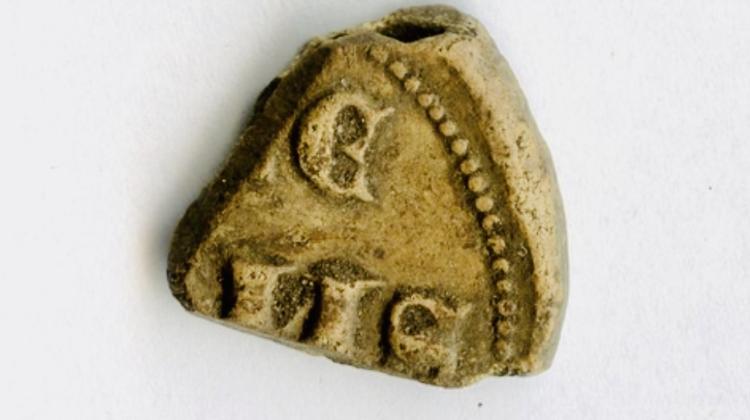Record Drought a Double-Edged Sword, say Archaeologists
During a drought the remains of old buildings become more visible from a bird's eye view and wrecks emerge from rivers. But although it offers a chance for new discoveries, water has preservative properties and without it wooden monuments will be destroyed quickly, archaeologists warn.
According to weather forecasters and hydrolologists, if there is no regular, long-term rainfall in the near future, in the summer we can expect one of the largest droughts in Polish history.
On one hand, archaeologists view this phenomenon as a chance to study the farthest past, because in such conditions where the outlines of old buildings or tombs are even more visible in the fields from a bird's eye view. This is due to the fact that the grains grow differently and have a different colour over places where there are relics of, for example, old walls.
Aviation archaeologist Piotr Wroniecki said: “Such differences are even more evident in periods of drought. This was the case, for example, in 2015 and 1976 throughout Europe.”
According to him, if the current weather continues until summer, we can expect a flood of archaeological discoveries made from a bird's eye view (with a plane or a drone). Wroniecki plans to perform flights in Małopolska and Silesia, especially where he conducted observations in previous years over known archaeological sites.
He said: “Although these areas seem to be very well archaeologically surveyed, every year we are surprised by new observations and discoveries. We find new traces of ancient human activity, for example settlements, and the ones we already know turn out to be much more extensive and complex.”
Researchers also expect many discoveries in rivers and lakes as the water level has already dropped significantly. Underwater archaeologist Artur Brzóska from the Association of Archaeologists of Tomorrow, who has been exploring the Vistula River in the Warsaw area for several years, will continue work in May with the help of specialized equipment, including sonar. But if the water level decreases even further, objects may appear in the dried-up fragments of the riverbed.
According to Brzóska, drought is a great threat to wrecks and other structures that will begin to emerge from lakes or rivers. He said: “Remember that for hundreds of years all water transport was concentrated on rivers, including the Vistula. There are many wrecks at its bottom.”
But thanks to the decreasing water level, other monuments may emerge, for example, old bridges and even houses. In 1933, a prehistoric settlement was discovered in Biskupin precisely because drainage and irrigation works began, which contributed to a significant drop in water level, which in turn saw archaeologists mobilised into action to protect them.
Brzóska said: “When the wood is under water, it undergoes a natural conservation process. But when it emerges above the water surface, it dries rapidly and quickly disintegrates. This can happen to all wooden monuments that will emerge during this year's drought.”
Archaeologist Marcin Krzepkowski from the Regional Museum in Wągrowiec added that leather artefacts are equally endangered. They are also usually well preserved in a humid environment. Krzepkowski said that lower water surface may also reveal various types of deposits made in ponds during the Bronze Age. These are usually ceramic vessels containing bronze objects or intentionally, ritually destroyed weapons.
But he added that droughts can also hinder the work of archaeologists. “Observation of the archaeological layers and their documentation is disrupted. To address this problem, we need to pour water on the archaeological excavations, which are already completely dry in many places in the country,” he said.
In 2014, Krzepkowski discovered a lost medieval town in Wielkopolska – Dzwonowo, after analysing aerial photographs which showed differences in plant vegetation. This allowed him to determine the town's area and even the sizes of individual buildings.
According to the archaeologist, this year's drought may contribute to the discovery of many more lost towns and settlements. “Everything is now in the hands of archaeologists,” he said.
PAP - Science in Poland, Szymon Zdziebłowski
szz/ agt/ kap/
tr. RL
Przed dodaniem komentarza prosimy o zapoznanie z Regulaminem forum serwisu Nauka w Polsce.

















